Top Places to Visit in Delhi
Introduction
Welcome to Delhi, a city where history and modernity blend seamlessly, offering a vibrant tapestry of sights, sounds, and experiences. From the majestic remnants of the Mughal Empire to the bustling markets and serene temples, Delhi is a treasure trove for travelers. Each corner of this dynamic city tells a story, inviting you to explore its rich heritage and contemporary charm. Whether you’re wandering through ancient forts, marveling at architectural wonders, or soaking in the local culture, Delhi promises an unforgettable journey. Here are the top places to visit in Delhi.
Taj Mahal
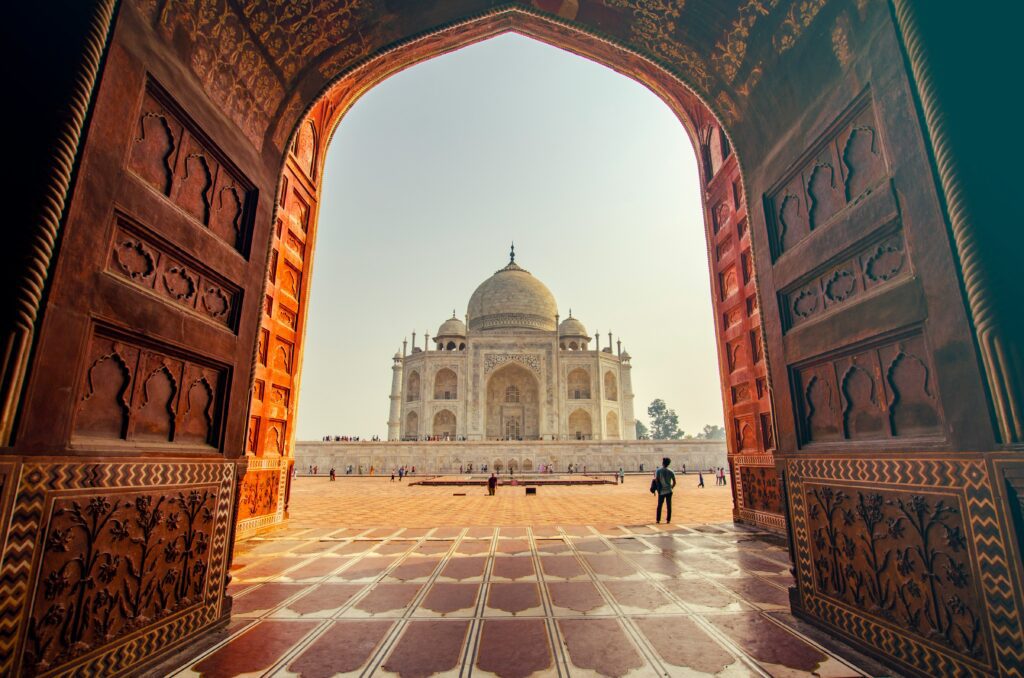
The Taj Mahal, a mesmerizing marble marvel in Agra, stands as an eternal testament to love. Built by Emperor Shah Jahan in memory of his beloved wife Mumtaz Mahal, this UNESCO World Heritage Site never fails to awe visitors. Its stunning white dome, intricate carvings, and lush gardens make it a masterpiece of Mughal architecture. Visit at sunrise or sunset to see the marble change hues with the light. Inside, the delicate pietra dura inlay work and the serene tomb chamber add to its ethereal beauty. The Taj Mahal is not just a sight to behold but a place where history and romance are eternally intertwined.
Sansad Bhavan

Sansad Bhavan, or the Parliament House, is the heartbeat of India’s democratic spirit. Located in New Delhi, this iconic circular building, designed by British architects Edwin Lutyens and Herbert Baker, houses the Lok Sabha, Rajya Sabha, and the Library. The architectural grandeur, with its massive colonnades and domed central hall, is truly impressive. While public entry is restricted, the grandeur of its exterior and the well-maintained gardens offer a glimpse into the nation’s political epicenter. Visiting the nearby Parliament Museum can also provide fascinating insights into India’s legislative history. The structure itself is a symbol of the nation’s enduring democratic values.
Qutub Minar
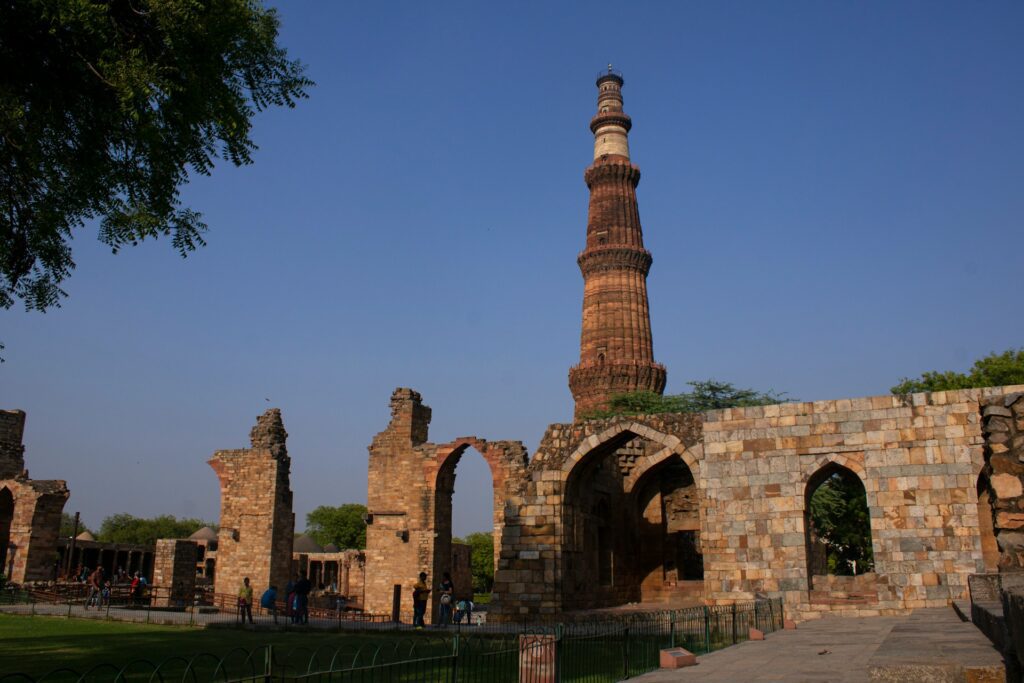
Qutub Minar, a soaring 73-meter-high tower, is a marvel of ancient engineering and Indo-Islamic architecture. Completed in the 13th century, this UNESCO World Heritage Site in Delhi is the world’s tallest brick minaret. Each of its five distinct stories, adorned with intricate carvings and verses from the Quran, narrate a tale of historical conquest and craftsmanship. Surrounded by the Qutub Complex, which includes the Iron Pillar and Quwwat-ul-Islam Mosque, it offers a captivating journey into India’s medieval past. Climbing to the top is restricted, but the views from the base, combined with the complex’s serene ambiance, make for an unforgettable experience.
India Gate
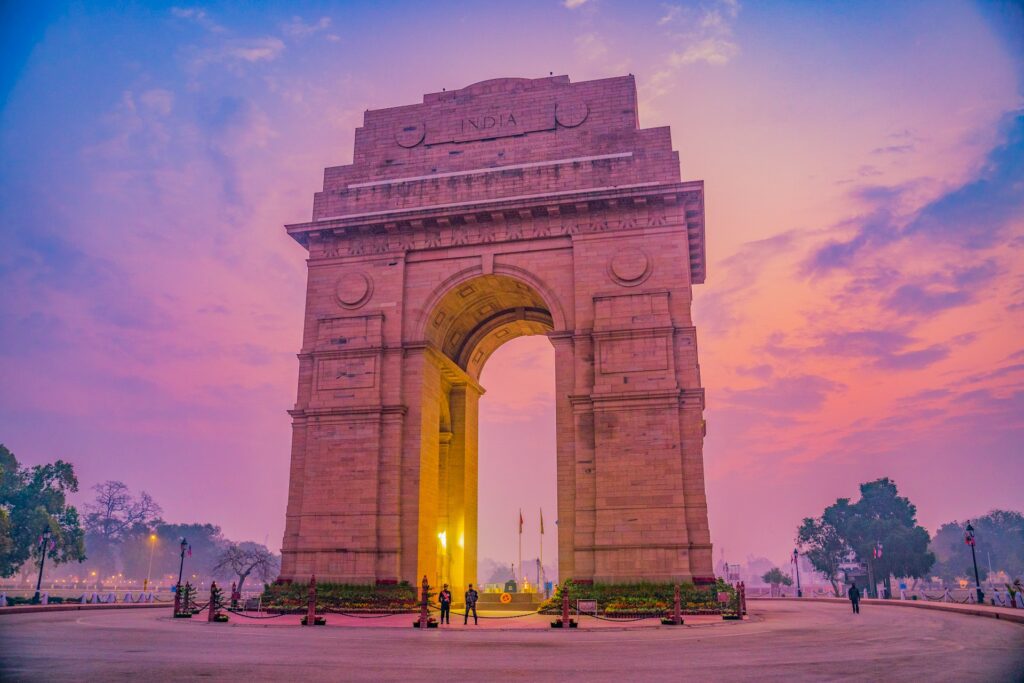
India Gate, standing proudly in the heart of New Delhi, is a monumental archway commemorating the soldiers of the British Indian Army who fell in World War I. Designed by Sir Edwin Lutyens, this 42-meter-high structure resembles the Arc de Triomphe in Paris. Its walls are inscribed with the names of over 13,000 brave soldiers. The eternal flame at its base, Amar Jawan Jyoti, honors the unknown soldiers of independent India. By night, the illuminated India Gate, with its serene lawns and bustling crowds, transforms into a vibrant hangout spot. It’s a place where history, memory, and everyday life beautifully converge.
Humayun’s Tomb

Humayun’s Tomb in Delhi is a precursor to the grandeur of the Taj Mahal. This splendid UNESCO World Heritage Site, built in 1570, is the resting place of Mughal Emperor Humayun. Designed by Persian architect Mirak Mirza Ghiyas, the tomb showcases stunning Mughal architecture with its symmetrical gardens, arched corridors, and double dome. The red sandstone structure, embellished with white marble inlays, stands majestically amid Char Bagh-style gardens. Wander through its serene pathways and explore the various smaller monuments within the complex. Humayun’s Tomb offers a peaceful retreat into history and an architectural feast for the eyes.
Lotus Temple
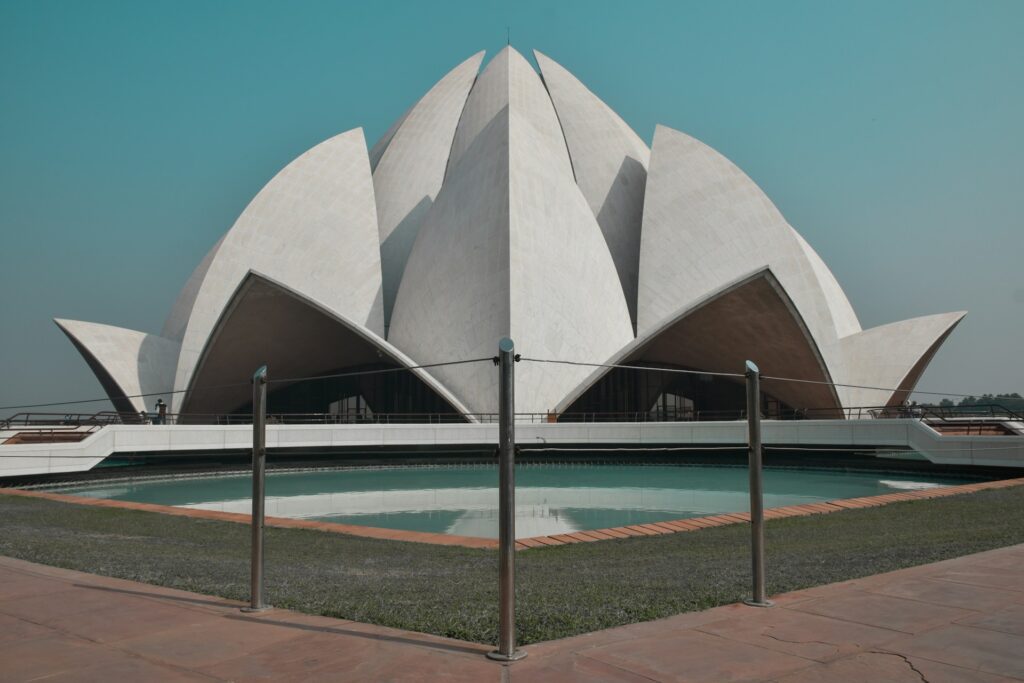
The Lotus Temple in New Delhi is a modern architectural gem shaped like a blooming lotus flower. Completed in 1986, this Bahá’í House of Worship welcomes people of all faiths for meditation and prayer. The white marble petals, designed by Iranian architect Fariborz Sahba, create a stunning visual spectacle, especially when lit up at night. Inside, the serene hall, devoid of idols, emphasizes unity and peace. Surrounded by nine reflecting pools and lush gardens, the Lotus Temple is a serene oasis amid the city’s hustle and bustle. It’s a place to reflect, relax, and marvel at contemporary architectural brilliance.
https://eskapas.com/tour/best-of-india/
Lal Qila – Red Fort
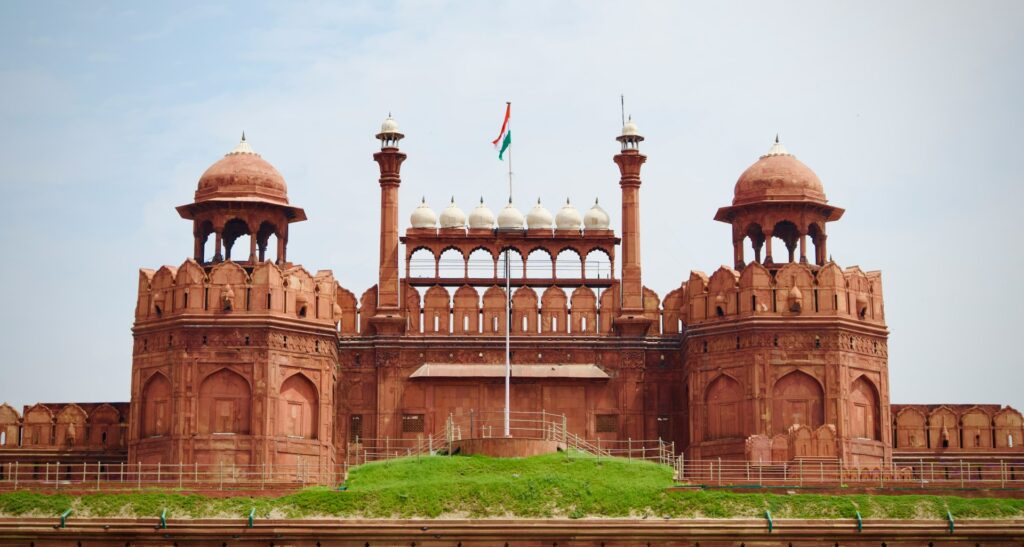
Lal Qila, or the Red Fort, is an enduring symbol of India’s rich history and sovereignty. Built by Emperor Shah Jahan in the 17th century, this massive red sandstone fort in Delhi served as the Mughal dynasty’s main residence. Its formidable walls, grand halls, and intricate marble palaces reflect the zenith of Mughal architecture. The fort’s Diwan-i-Aam (Hall of Public Audience) and Diwan-i-Khas (Hall of Private Audience) are must-sees. Today, the Red Fort is a bustling hub of history and culture, hosting the annual Independence Day celebrations. Exploring its museums and gardens offers a vivid journey into India’s past.
Jama Masjid
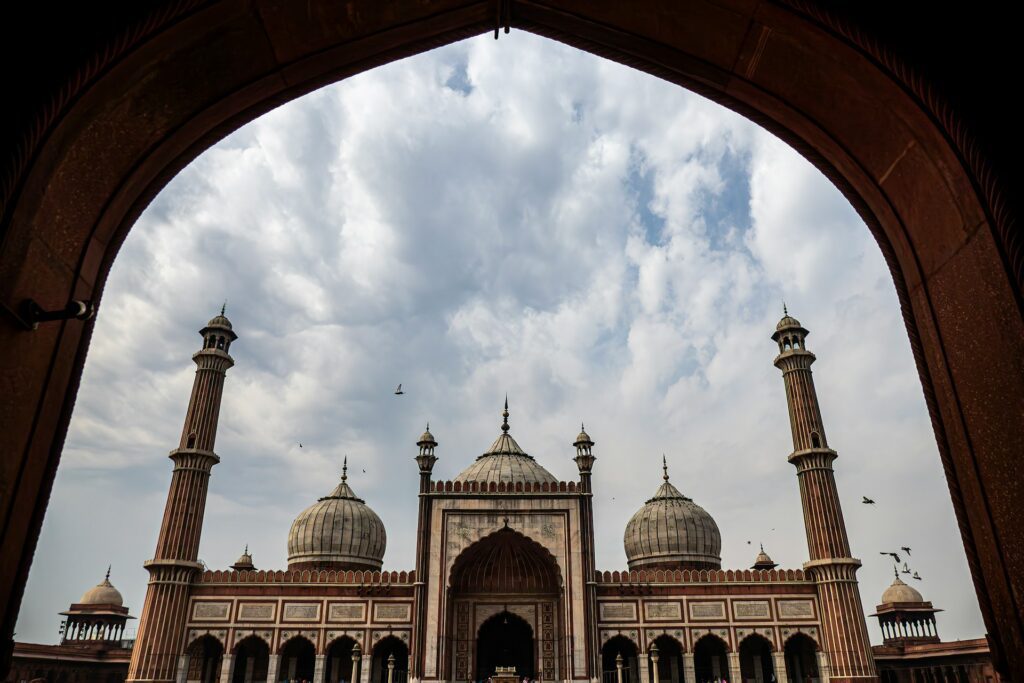
Jama Masjid in Delhi, commissioned by Emperor Shah Jahan, is one of the largest and most magnificent mosques in India. Completed in 1656, this architectural wonder can accommodate over 25,000 worshippers. Its vast courtyard, towering minarets, and grand domes make it an awe-inspiring sight. The intricate red sandstone and white marble details reflect the pinnacle of Mughal craftsmanship. Climb the southern minaret for a panoramic view of Old Delhi. Despite its historical grandeur, Jama Masjid remains a living, breathing center of faith and community. Visiting this majestic mosque offers a tranquil escape into a rich tapestry of spiritual heritage.
Tomb of İtimad-ud-Daulah
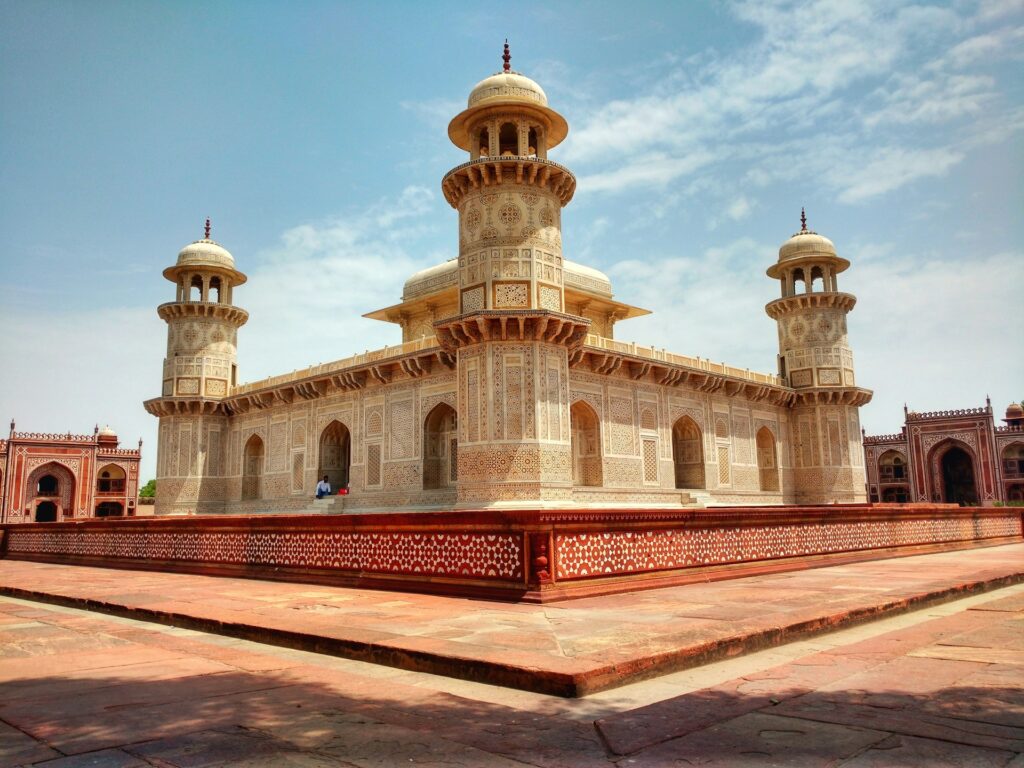
Often referred to as the “Baby Taj,” the Tomb of İtimad-ud-Daulah in Agra is a jewel of Mughal architecture. Built between 1622 and 1628, this exquisite marble mausoleum is the resting place of Mirza Ghiyas Beg, father of Empress Nur Jahan. Its intricate pietra dura inlay work and delicate lattice screens foreshadow the artistry of the Taj Mahal. The tomb’s serene gardens and symmetrical layout create a peaceful ambiance, perfect for a leisurely stroll. While smaller in scale, its architectural beauty and historical significance make it a must-visit. The Tomb of İtimad-ud-Daulah is a testament to the elegance of Mughal design.
Raj Ghat
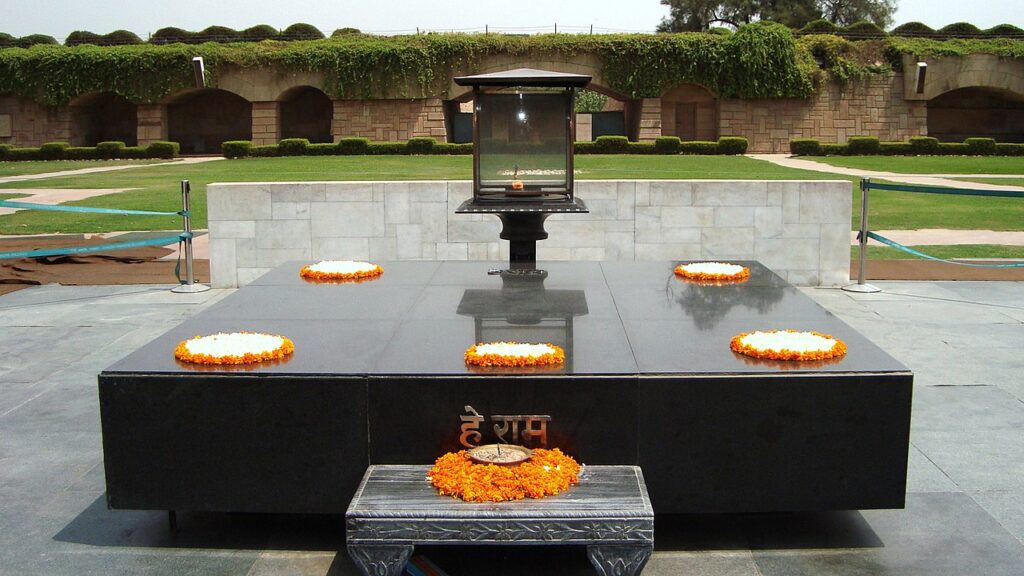
Raj Ghat in Delhi is a solemn memorial dedicated to Mahatma Gandhi, the father of the nation. This simple yet powerful black marble platform marks the spot where Gandhi was cremated following his assassination in 1948. Inscribed with his last words, “Hey Ram,” and surrounded by lush gardens and fountains, Raj Ghat offers a peaceful place for reflection. The eternal flame burns at one end, symbolizing Gandhi’s enduring legacy. Visiting Raj Ghat is a poignant experience, providing a moment to honor the principles of peace and non-violence that Gandhi championed. It’s a must-visit for those seeking to connect with India’s soul.
Connaught Place
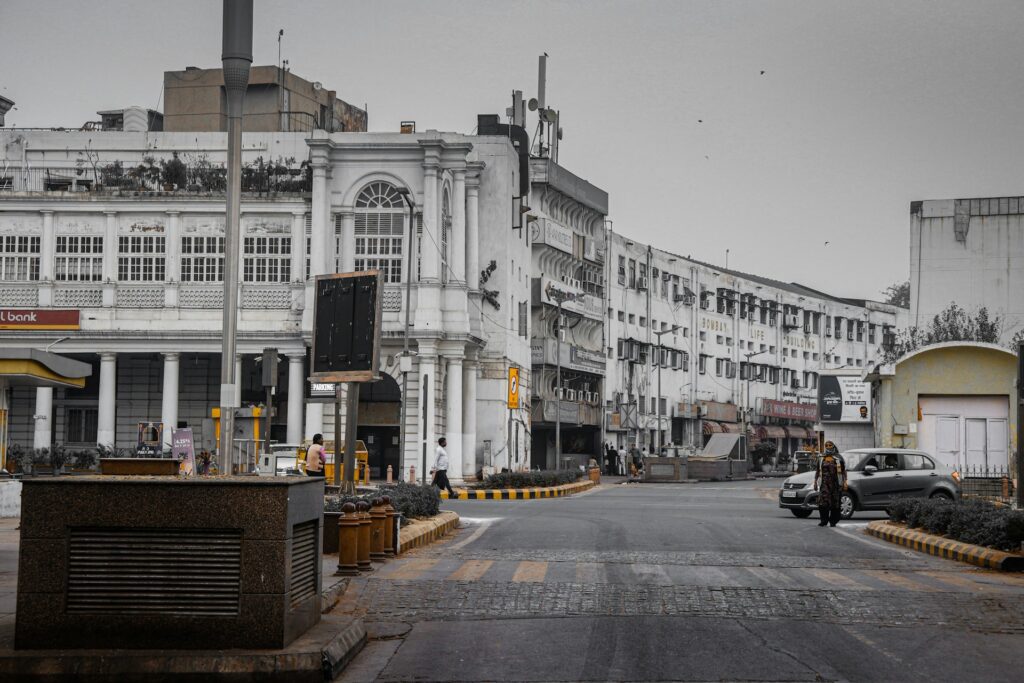
Connaught Place, often called CP, is the vibrant heart of New Delhi. This sprawling circular market, designed by British architects in the early 20th century, is a bustling hub of activity. Its white colonnaded buildings house everything from high-end brands and eclectic boutiques to cozy cafes and fine dining restaurants. The central park, with its lush greenery and fountains, provides a tranquil contrast to the busy streets. Whether you’re shopping, dining, or simply people-watching, Connaught Place offers a delightful urban experience. The blend of colonial architecture and modern vibrancy makes CP a must-visit for any traveler exploring Delhi.










